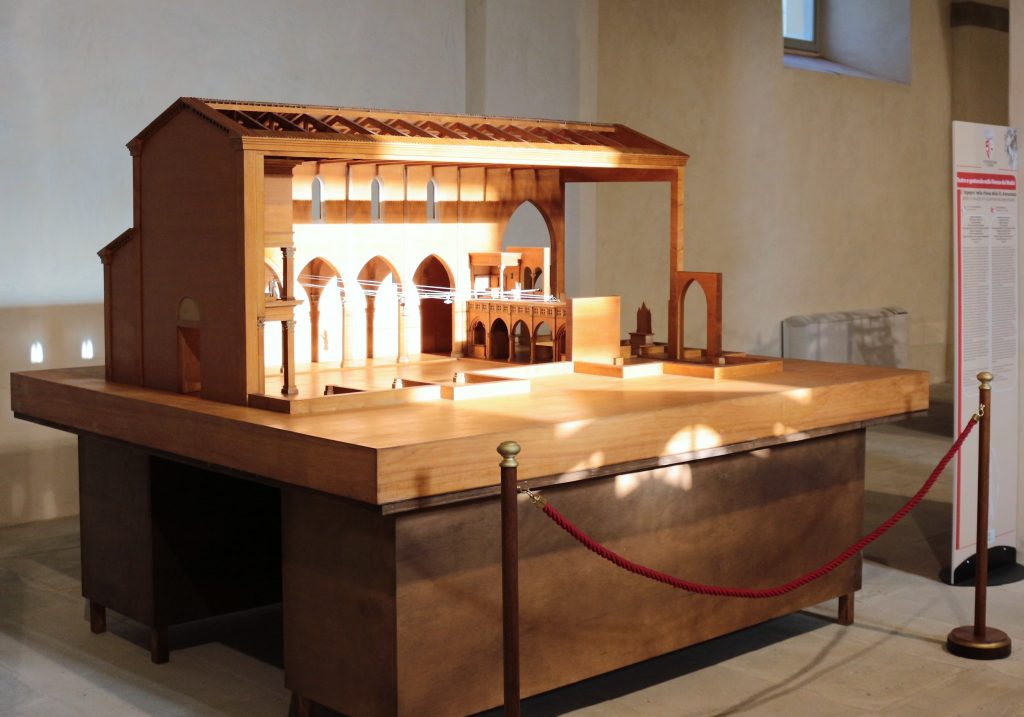- Home
- /
- Parco Mediceo di Pratolino
- /
- The Medici theatrical mechanisms...
- /
- The Medici theatrical mechanisms...

The “mechanism” in the Church of SS. Annunziata
Interpretative model of the “mechanism” built by Filippo Brunelleschi in SS. Annunziata for the representation of the Annunciation of Mary staged on the occasion of the Florentine Council of 1439.
Project by Ludovico Zorzi and Cesare Lisi, constructed by Cesare Lisi – 1975.
Scale 1:25
In the Church of SS. Annunziata, the mechanism occupied the longitudinal space of the nave, the single space for both the public and participants. It included two designated places: the first, placed on a platform built above the front door of the Church, depicted the Empyrean heaven with God the Father and the angels and the circles of Heaven studded with lights and rotating devices; the second, for the Virgin and the Prophets, was located on the ‘partition’. This was a masonry construction that separated the nave from the presbytery (therefore a permanent and not temporary structure). This architectural element was characteristic in convents, separating the general lay public from the clergy during religious services, and on occasion acting as a stage for performances.
In the ‘mechanism’ in SS. Annunziata, some taut ropes joined the two places, and running on these, in the appropriate moment, descending toward the Virgin’s cell, was a child playing the annunciation angel; the ‘flight’ took place over the heads of the spectators who thronged the nave and the whole of the stage action directed the public to turn first to God’s platform, then to follow the flight of the angel overhead and then turn toward the partition where the annunciation scene took place. Once the dialogue-dispute between the archangel and Mary had taken place, there was another ‘marvellous’ scene: detaching from the Empyrean, also descending along ropes stretched alongside the first, was a firework, which crossed with the passage, in the opposite direction, of the angel coming back to the platform, filling the whole Church with light. The fire symbolized the idea of the Holy Spirit emanating from the Father and Son, and on that occasion displayed a detail of the Credo, the ecumenical council and discussion being held in Florence during those days.
Completing the theatrical illusion was the use of curtains that revealed and then concealed the places where the action occurred.



